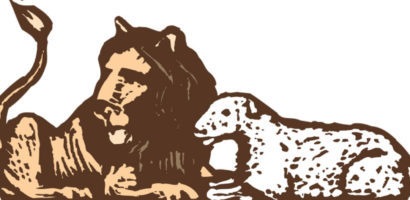Last time, we began to discuss Jesus’ final week against a Jewish background. We know already that Jesus had to enter Jerusalem on the 10th of Nisan – the very same day when the perfect lamb was to be selected and set apart. It was Sunday that year, and what had happened between that Sunday and the next Sunday, the 17th of Nisan? Let us try to pin the crucial events of this week to the days of the week.
THE LAST SUPPER
The last days of Jesus, as well as the day and the date of His crucifixion, have been among the most debated topics throughout the history of the New Testament. Many respected scholars have commented on this topic over the years. And the first question: when was the Last Supper? Was the Last Supper a Seder – the festive meal that marks the beginning of the Passover?
Of course, I don’t claim to have the final answers, but personally, I don’t think it was a Seder. According to Jewish tradition, “a paschal lamb is invalid if it was slaughtered for those who will not eat it…” A paschal lamb had to be eaten during the Passover meal! The eating of the paschal sacrifice was the principal part of Seder! If the New Testament presents Jesus as the Passover Lamb, the meal that happened BEFORE the sacrifice of the Lamb, by definition, could not have been a Seder.
So, what was the nature of this meal? From the Jewish texts, we understand that in Jesus’ time, there were different festival traditions in different places. As we all know, Jesus and his disciples were Galileans, therefore they would have observed the Galilean traditions. There were several differences between Judean and Galilean Passover observance, but the most important one was a special fast – the Fast of the Firstborn, in remembrance of the firstborn Israelites who were saved from death (that is why we read in the Mishna that “in the Galilee, they didn’t work at all” on Passover day). The fast took place on Nisan 14, on the day of Passover.
In Hebrew, the last meal before a fast is called seudah maphsehket (for instance, seudah maphsehket before Yom Kippur, the last meal before Yom Kippur fast, is a very special event here). Thus, in the Galilean tradition, there was this special meal at the beginning of Nisan 14th called seudah maphsehket. After this meal, there would be a whole day fast. The next meal, after the sacrifice of the Passover lamb, would be the Seder.
Let us now try to figure out the days of the week when all of this happened. On Wednesday Nisan 13, the disciples prepared this special meal that we call the Last Supper and that was, in fact, seudah maphsehket—the last meal before the Fast of the Firstborns. Jesus and his disciples ate this meal on Wednesday night, as the day changed to Nisan 14. Then Jesus was arrested at night, tried and convicted early on Thursday morning, then crucified during that day – and all this happened on Nisan 14, Thursday, the day of “Pesach”—the day of the slaughtering of the paschal lamb. Thus, on Thursday, Nisan 14, Jesus died on the cross; and on Sunday, Nisan 17 – the Feast of Firstfruits – Jesus was resurrected.
WASHING THE FEET
In John 13, during that Last Supper, Jesus Himself washes the feet of his disciples. Why did He do that? Was it a Jewish custom? John 13 takes on even deeper meaning when understood against its Jewish background.
The washing of the feet was the first act upon entering a tent or house after a journey. Usually, the host provided the water, and the guests washed their own feet. Sometimes in the richer houses, the washing was done by slaves. In Genesis 18, when three men come to Abraham, he offers them water to wash their feet. With all his exemplary hospitality, Abraham didn’t wash the feet of his guests – it was probably not a proper thing to do. Instead, he said, You will wash your feet (rahzu).
From Genesis 18, we see that it was not customary for the host to wash the feet of his guests. Thus, when Jesus washed his disciples’ feet, it could not be explained as a necessity or custom. John said that Jesus “loved His own to the end”: in washing their feet, He exemplified the most vital components of the New Covenant – love and humility. This act, so powerful in itself, becomes even more meaningful when seen against the Jewish background because what Jesus did on the last evening of His life, went far beyond the traditional ideas and customs.
DID JESUS EAT MATZAH?
We know by now that in Leviticus 23, we find three different festivals during that weeklong celebration that we call Passover today. Jesus died on the day of Passover; Jesus rose from the dead on the day of First Fruits; did he miss the Feast of Unleavened Bread, then? Did Jesus eat matzah?
You would remember of course, the beautiful Emmaus story from the last chapter of Luke’s Gospel, and the meal the two disciples had with Jesus after they had “constrained him and he went in to stay with them”. We read:
Now it came to pass, as He sat at the table with them, that He took bread, blessed and broke it, and gave it to them. Then their eyes were opened and they knew Him.
Sharing meals has always been a very important part of Jewish community life. At the beginning of the meal, the traditional blessing is always said as the bread is broken: “Barukh attah Adonai elohenu Melekh ha-olam ha-motzi lechem min ha-aretz” – “Blessed are You, Lord our God, King of the Universe, who brings forth bread from the earth”. In the Babylonian Talmud, we read: “The host should break bread” (Berakoth 46). In Jewish tradition, the host – the head of the household – is the one who always says the blessing and breaks the bread. Strangers who are invited to a meal usually wait for directions from their host and quietly receive what is set before them. However, that is not what we see here!
Strange peculiarity marked this guest’s behavior. Clearly, this was not a regular guest! Instead of waiting for his host’s direction, this stranger takes the host’s place: He says the blessing and breaks the bread! We can imagine that this behavior must have caught the attention of everyone in the house. If you are interested to read more about this meal and to find out what this unusual authority meant, I refer you to my article on this blog: “Key Number Four: Blessing the Bread”.
Remember, it was still Passover week. In any Jewish house, there could be only Matzah on the table during this week. The Blessing on Matzah would have been added to the regular blessing: “Blessed are You, Lord our God, King of the Universe who makes us holy through Your commandments, and commands us to eat Matzah.” In Emmaus, Jesus took part in a regular Jewish meal of Chol Ha-Moed (Passover week) – and this means that, even after his resurrection, Jesus still observed the Biblical Feast of Unleavened Bread.
I would like to remind you, dear friends, that eTeacher offers a wonderful course, Jewish Background of the New Testament. . As always, you are welcome to contact me for more information! Also, if you like the articles on this blog, you might enjoy also my books, you can get them here.









Join the conversation (No comments yet)